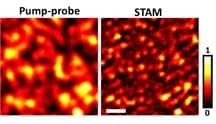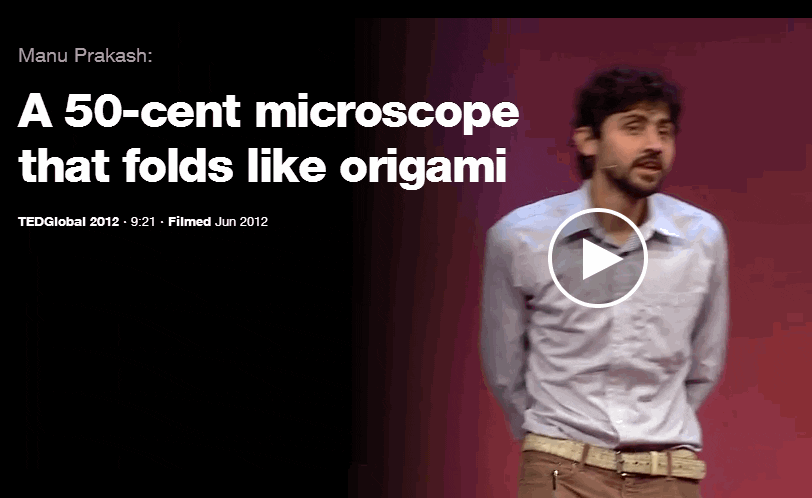
Researchers have found a way to see synthetic nanostructures and molecules using a new type of super-resolution optical microscopy that does not require fluorescent dyes, representing a practical tool for biomedical and nanotechnology research.
“Super-resolution optical microscopy has opened a new window into the nanoscopic world,” said Ji-Xin Cheng, an associate professor of biomedical engineering and chemistry at Purdue University.
Conventional optical microscopes can resolve objects no smaller than about 300 nanometers, or billionths of a meter, a restriction known as the “diffraction limit,” which is defined as half the width of the wavelength of light being used to view the specimen. However, researchers want to view molecules such as proteins and lipids, as well as synthetic nanostructures like nanotubes, which are a few nanometers in diameter.
Such a capability could bring advances in a diverse range of disciplines, from medicine to nanoelectronics, Cheng said.
“The diffraction limit represents the fundamental limit of optical imaging resolution,” Cheng said. “Stefan Hell at the Max Planck Institute and others have developed super-resolution imaging methods that require fluorescent labels. Here, we demonstrate a new scheme for breaking the diffraction limit in optical imaging of non-fluorescent species. Because it is label-free, the signal is directly from the object so that we can learn more about the nanostructure.”
Findings are detailed in a research paper that appeared online Sunday (April 28) in the journal Nature Photonics.
The imaging system, called saturated transient absorption microscopy, or STAM, uses a trio of laser beams, including a doughnut-shaped laser beam that selectively illuminates some molecules but not others. Electrons in the atoms of illuminated molecules are kicked temporarily into a higher energy level and are said to be excited, while the others remain in their “ground state.” Images are generated using a laser called a probe to compare the contrast between the excited and ground-state molecules.
The researchers demonstrated the technique, taking images of graphite “nanoplatelets” about 100 nanometers wide.
“It’s a proof of concept and has great potential for the study of nanomaterials, both natural and synthetic,” Cheng said.
The Latest Bing News on:
Super-resolution optical microscopy
- Single-Molecule Imaging Techniques: Shedding Light on Molecular Dynamicson May 15, 2024 at 9:04 am
Use precise geolocation data and actively scan device characteristics for identification. This is done to store and access information on a device and to provide personalised ads and content, ad and ...
- Seeing fluorescence at super-resolutionon May 13, 2024 at 10:28 am
Over the past decade clever microscopists have devised ways to break these limits in fluorescence microscopy, but the need for specialized equipment inhibited uptake of super-resolution optical ...
- Biophysics: Testing how well biomarkers workon April 23, 2024 at 5:00 pm
Researchers have developed a method to determine how reliably target proteins can be labeled using super-resolution fluorescence microscopy. LMU researchers have developed a method to determine ...
- Vutara VXL Super-Resolution Microscopeon April 20, 2024 at 2:35 pm
Vutara’s Quantitative Localization Microscopy suite allows you to turn localizations and voxels into meaningful results by guiding users through the setup, calibration, imaging, processing, and ...
- Artificial intelligence boosts super-resolution microscopyon March 28, 2024 at 10:44 am
Super-resolution microscopy aims to overcome the diffraction limit, a limit that restricts resolution due to the optical characteristics of the microscopic system. To surmount this limit ...
- Super resolution microscopy News and Researchon July 25, 2023 at 5:00 pm
LMU researchers have developed a super-resolution microscopy method for the rapid differentiation of molecular structures in 3D. Researchers from The University of Queensland have discovered the ...
- Microscopy articles from across Nature Portfolioon November 30, 2021 at 8:30 pm
Object visualization may be mediated by light or electron beams using optical or magnetic lenses ... to enable mechanical-scan-free super-resolution microscopy with adjustable resolution and ...
- Super-Resolution Microscope Functionality for EMCCD - iXon SRRF-Streamon August 14, 2020 at 6:19 pm
100 raw ‘input’ images were recorded for every resultant super-resolution image ... recorded on the same microscope, using identical objective and optical path. The sole difference being that SIM was ...
- Super-resolution microscopyon October 17, 2017 at 6:17 am
STED (Stimulated emission depletion) is a true optical super-resolution technique in which a doughnut shaped ... TIRF imaging by our Abbelight SAFe360 system on Olympus IX83 microscope.
The Latest Google Headlines on:
Super-resolution optical microscopy
[google_news title=”” keyword=”super-resolution optical microscopy” num_posts=”10″ blurb_length=”0″ show_thumb=”left”]
The Latest Bing News on:
Super-resolution microscope
- Seeing fluorescence at super-resolutionon May 13, 2024 at 10:28 am
Second, several groups have described methods for super-resolution fluorescence imaging that only require a commonly available microscope, specialized but easily obtainable fluorescent labels ...
- Microscopic heart vessels imaged in super-resolution for first time at Imperialon May 5, 2024 at 5:00 pm
They used ultrasounds and microbubbles (small, gas-filled bubbles used to differentiate between internal structures in medical imaging) to image the microvascular structure and flow dynamics of the ...
- Testing how well biomarkers work: New fluorescence microscopy method can improve resolution down to the Ångström scaleon April 23, 2024 at 5:00 pm
The authors of the study are certain that the new quantification method has paved the way for significantly expanding the potential of their super-resolution microscope method, "Now we can also ...
- Biophysics: Testing how well biomarkers workon April 23, 2024 at 5:00 pm
The authors of the study are certain that the new quantification method has paved the way for significantly expanding the potential of their super-resolution microscope method: "Now we can also ...
- New super-resolution microscopy approach visualizes internal cell structures and clusters via selective plane activationon April 22, 2024 at 9:16 am
This is the intrinsic limitation on a microscope's ability to focus on objects smaller than the wavelength of light being used. Structured illumination microscopy is one of the super-resolution ...
- Switching off the light to see betteron April 21, 2024 at 5:00 pm
This is the intrinsic limitation on a microscope's ability to focus on objects smaller than the wavelength of light being used. Structured illumination microscopy is one of the super-resolution ...
- Vutara VXL Super-Resolution Microscopeon March 29, 2023 at 7:13 am
When combined with Bruker’s unique microscope fluidics unit ... processing, and analysis of the super-resolution single-molecule localization experiments that include spatial distributions, cluster ...
- DeltaVision OMX V4 – Multi-mode Super-Resolution Microscopeon April 28, 2022 at 4:26 am
Compared to conventional microscopy, the OMX super-resolution microscope improves spatial resolution by a factor of 2 to 5. The OMX is equipped with a structured illumination microscopy (SIM) module, ...
- FV3000 Confocal Laser Scanning Microscope from Evident Corporationon April 26, 2022 at 7:38 am
Galvanometer scanner enables Evident super resolution technology (FV-OSR) yields resolutions down to 120 nm as well as high signal-to-noise, with precise tornado and multipoint stimulation and 100 ...
The Latest Google Headlines on:
Super-resolution microscope
[google_news title=”” keyword=”super-resolution microscope” num_posts=”10″ blurb_length=”0″ show_thumb=”left”]











